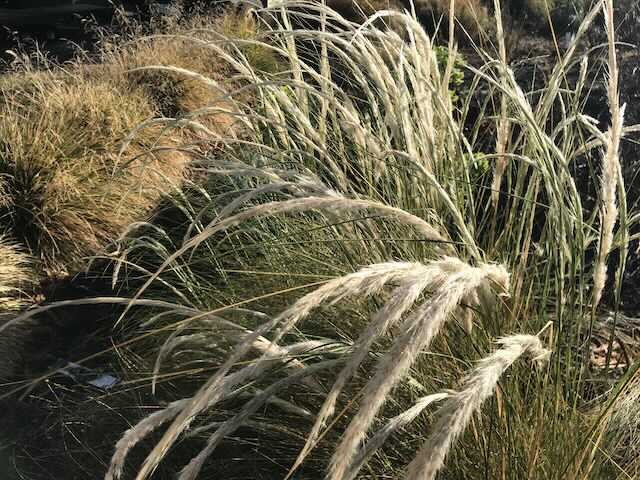
Blueberry 'Premier'
Warm climate blueberry, requiring less winter chill than others, however needs pollinator for best fruiting yeild


A beautiful grass from Peru where it grows on elevated dry plateau on gravelly ground. In Australia it tends to flower autumn to winter, and prefers to dry off in summer, although in mild areas it seems to flower continuously if dead headed. Cut older plants back to half after flowering once growth begins to show signs of drying off. The white flowers are very attractive in mass plantings, and so far the grass has not self sowed. A lower slowish growing variety that doesnt like wet feet.
A beautiful grass from Peru where it grows on elevated dry plateau on gravelly ground. In Australia it tends to flower autumn to winter, and prefers to dry off in summer, although in mild areas it seems to flower continuously if dead headed. Cut older plants back to half after flowering once growth begins to show signs of drying off. The white flowers are very attractive in mass plantings, and so far the grass has not self sowed. A lower slowish growing variety that doesnt like wet feet.
Data sheet
Warm climate blueberry, requiring less winter chill than others, however needs pollinator for best fruiting yeild
White flowered form of E.comosa, strappy foliage and summer flowering, showy plant, winter deciduous, large bulbs.
Low mounding variety that will trail over a wall or amongst rocks, likes drained drier soil types. Tasmanian native, very pretty plant and surprisingly tough, will withstand summer dry.
Soft peach colour fading to pastel, a subtle colour for the cottage garden combining well with astrantia, geraniums and old roses.
New variety from our trial beds, a lovely pink form which is an offspring from Achillea 'Love Parade', demonstates all the rubustness of other achillea varieties. Once established best not overly fertilized to maintain upright habit, as with other varieties.
My favourite new salvia for border, rose-garden or mass planting. White flowers enveloped by a royal purple calyx on a vigourous plant that"s not too big, but not too small. Grows well in large containers providing you remember to water.
Medium height violet aster, prolific flowering in autumn. Easy cultivation as with other varieties
A vigorous semi double windflower for part or full shade, spreads well in mass planting or individually in shady garden corners or under deciduous shrubs. Flowers late summer.
A nice addition to the summer flowering pallette, this persicaria has a softer colour than 'Taurus' with similar good qualities of long flowering and good foliage and infill. Best on heavier fertile soils.
One of the earliest fruiting varieties, with tall vigorous growth habit to 2.1m. Once established, prune out central canes to keep bush open. As with most blueberries, fruit production is improved by planting other varieties nearby. Sweet fruit which stores and freezes well, perfect for jams, pies, or just eaten fresh.
Strong upright variety great for amongst grasses and floral work. Best on drained soils. Cut to the ground in winter every 2-3 years when growth congested.
A terrific ground covering plant flowering for a long season with hundreds attractive white flowers, easy to grow over a bank, foreground edging , effective filler as massed as bedding for any situation, or combined in groups with mixed perennials in a meadow setting. All round great plant and current favourite of ours.
A local plant Ive always loved on the roadsides in summer on Bruny, flowering creamy white in massed colonies. A worthwhile addition to summer perennial plantings with sedums, austrostipa, agastache, and miscanthus. Lower growing and more slender than many other grasses.
Lovely grape hyacinth for gardens or pots, vigourously clumping and easy, early spring flowering bulbs. Clump of flowered bulbs in each pot ready to plant.
An attractive foliage contrast to plant with hostas and woodland plants in moist shade or part sun around water features. These flower well in summer, and look great with Ligularia, Thalictrum and Filipendula as a backdrop. Rose pink flowers.
A lovely variation on 'Bicolor' with copper two tone flowers for much of winter. Perennial wallflowers require good drainage and dont like it too wet.

A beautiful grass from Peru where it grows on elevated dry plateau on gravelly ground. In Australia it tends to flower autumn to winter, and prefers to dry off in summer, although in mild areas it seems to flower continuously if dead headed. Cut older plants back to half after flowering once growth begins to show signs of drying off. The white flowers are very attractive in mass plantings, and so far the grass has not self sowed. A lower slowish growing variety that doesnt like wet feet.